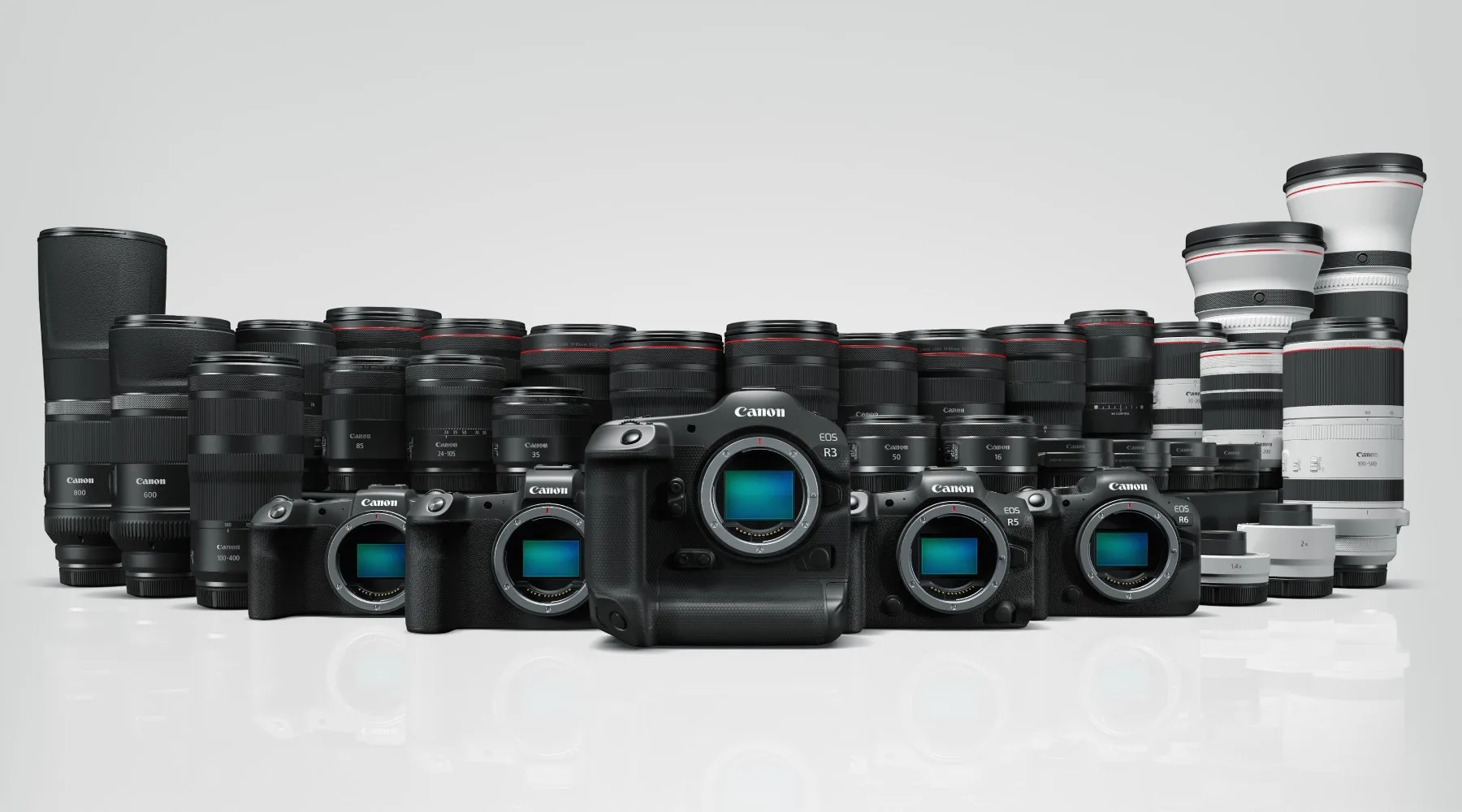5 best features of Canon’s new EOS R3 mirrorless camera
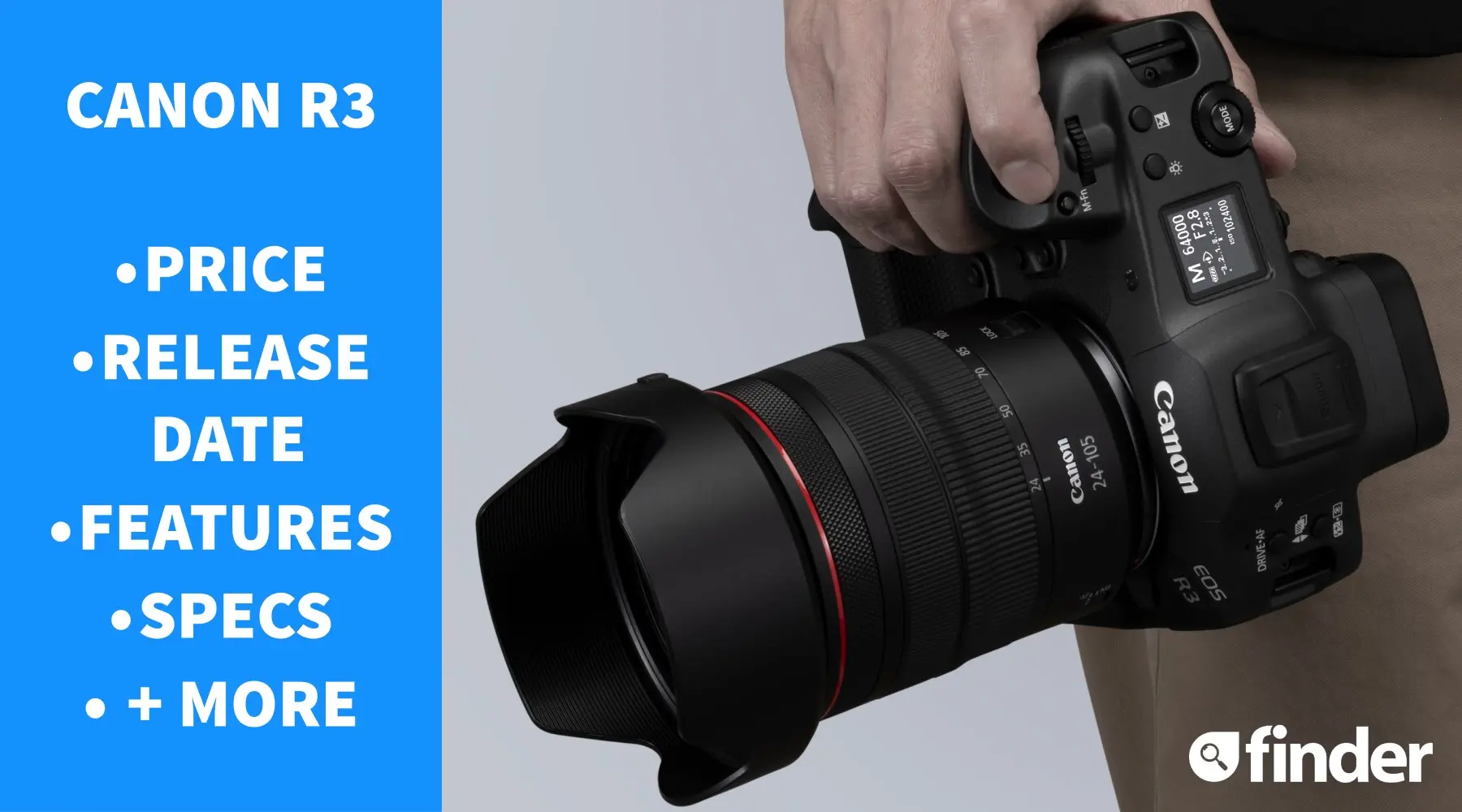
Canon has revealed the EOS R3, a professional grade mirrorless camera that sits between the 1D X Mark III and R5. Here's everything you need to know.
Canon has been impressing with its latest range of mirrorless cameras. I've previously looked at the Canon R6 and R5, which offer enthusiast and professional grade entry points for photographers. For newcomers, there's the popular Canon EOS M50 Mark II. And you still have, at the top of Canon's pile, the beloved Canon 1D X Mark III.
Now we have a new entry in the EOS range. The Canon R3 will come in as a professional grade camera that leads the charge in the company's mirrorless range. It doesn't usurp the Canon 1D X Mark III, but provides an alternative entry point for professional photographers who want the more compact, lighter and modern mirrorless variant.
Finder was granted early access to look at the Canon R3. Here is everything you need know.
What is the Canon EOS R3 release date?
The Canon EOS R3 will launch in late November 2021. We've seen stock shortages with new Canon cameras through the COVID era, so recommend pre-order if you are keen. The Canon EOS R3 comes with a 5-year warranty.
How much is the Canon EOS R3 in Australia?
The Canon EOS R3 has a RRP of AU$8,599.00. This puts it between the 1D X and the R5 in price. Canon often chooses not to set an RRP for its mirrorless cameras, allowing retailers to set a price. That's not the case this time around. So, we may not see as much in the way of price wars in the marketplace around launch.
Who is the Canon EOS R3 for?
While I'm sure there are some enthusiasts among you who will be very keen to get the Canon R3, it's certainly considered a professional grade device. Its specific focus is high speed photography in all light conditions and to provide that in a rugged, outdoors-friendly chassis.
It wants to be the best camera on the market for sport, wildlife and news photography. Capturing anything moving at speed is where the Canon R3 excels, as well as performing in low light. It's obviously great in many other situations, both for stills and video, but Canon specifically highlighted speed, sensitivity and reliability as the 3 factors that set this camera apart.
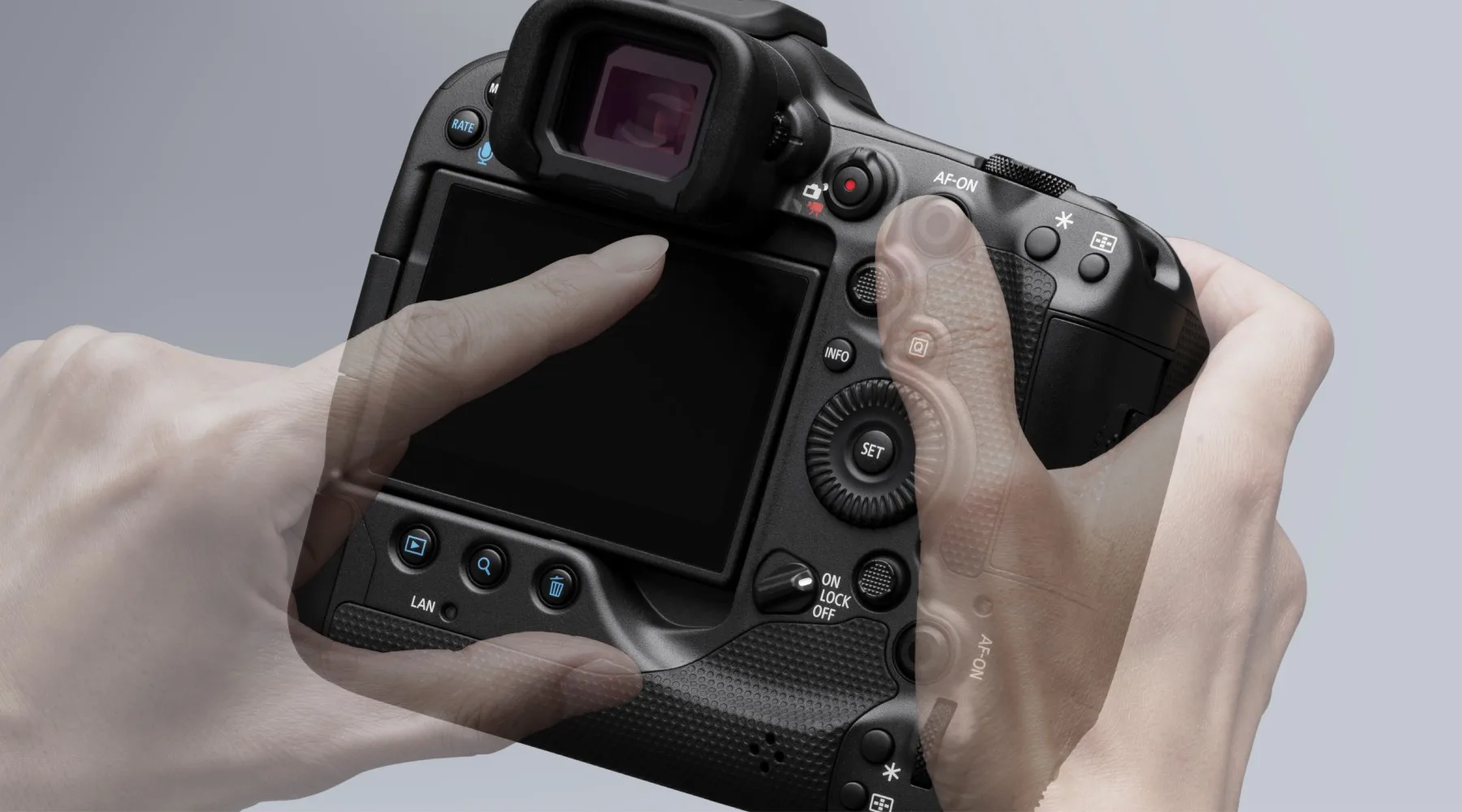
5 best features of Canon R3
There is plenty to like about the Canon EOS R3, but 5 features stood out to us.
Eye Control Auto Focus
This tech is awesome! When you are looking through the electronic view finder (EVF), you can adjust the point of focus simply by using your eyes. The subject or object you look at will be tracked, and the auto focus will adjust to meet the location of your attention. This is used to shift your focus between the foreground and background quickly, or between subjects in a picture. However, it's important to note that it's not for tracking moving objects – the advanced subject tracking software will do that for you once you've locked in the focus of the image.
Eye Control Auto Focus is made possible by the OLED EVF, which offers an impressive 5.76 million dot and 120fps screen, as well as no blackouts between shots.
You'll need to calibrate the eye tracking for landscape and portrait orientation, as well as indoor and outdoor use, or for use with glasses. You can have up to 6 user profiles too. However, it's important to note that tinted glasses, heavy contact lenses and other such eye overlays can prevent Eye Control Auto Focus from working.
Note: If you're moving across from the 1D X to the R3, there is an Optical View Finder (OVF) simulation mode, which widens the dynamic range and gives a more natural view through the lens. This is more like the 1D X, should you find the EVF not to your liking.
Auto Focus Subject Tracking
This feature uses dual pixel CMOS Auto Focus II to level-up the way moving images are tracked. There are specific modes for racing cars, motorbikes, animals, birds and people. The latter has improved eye detection that's less impacted by strange poses, makeup, lighting and – notable in today's world – face masks. Body detection is swifter, while head detection understands that people are sometimes wearing helmets.
All this is not only at play in video as well as stills, but can deliver in low light. Indeed, it will track things beyond the level at which human eyes can see, down to an EV of -7.5.
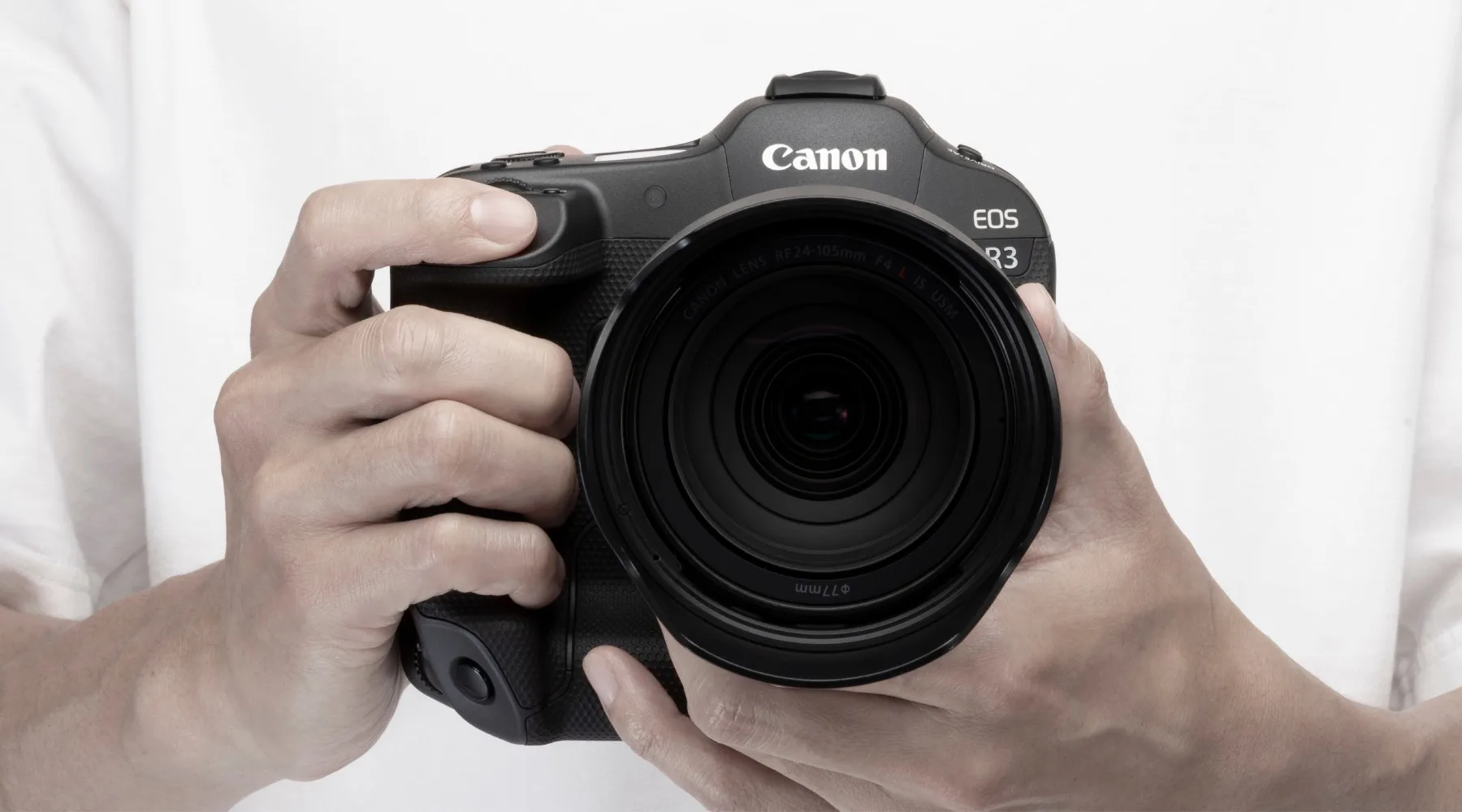
Speed of shots
The Canon R3 can shoot at 30 frames-per-second when using the electronic shutter (12fps with the mechanical shutter). This is saved in 14-bit RAW files, no less, with the Flash synced to the shutter (up to 15fps). That's fast. Indeed, the shutter speed can operate as fast as 1/64,000 of a second.
All this occurs with the full tracking features listed above in operation. To help ensure elements like eye tracking aren't impeded, there's no screen blackouts during continuous shots and you don't get any vibrations from the electronic shutter (like you do with a mechanical shutter). The rolling shutter has been reduced to get cleaner photos too, even when taken continuously at full pelt.
It's worth noting the shutter speed can be set to silent, which is handy if you're shooting wildlife.
Low light shooting
Given the speed at which this camera can fire off shots, being able to deliver in low light was going to be important. The Canon R3 has an ISO limit of 102,400 for still images, which is expandable to 204,800. And as mentioned, the auto focus can track things at an EV level of -7.5. It also delivers up to 8 stops of image stabilisation (depending on the lens you are using), which plays a vital role too.
The result is much better low-light and indoor performance with handheld photos. Indeed, it can auto-correct impressively with up to 4 seconds of open shutter. In most cases though, it will do an HDR-PQ 3-shot composite, capturing 3 shots in 0.02 seconds at different light ranges to piece together an image.
Multi-Function Shoe
Perhaps the most notable improvement to the classic Canon EOS design is the new multi-function shoe. So much like it did with the RF lenses, this new shoe allows for faster transfer of not just data, but power, between the camera and accessories. The first of its kind for a mirrorless camera, the big plus here is that the accessories don't need to have their own power supply, and can therefore be smaller in design.
Indeed, 4 compatible accessories announced alongside the Canon R3:
- DM-E1D Digital Microphone for AU$579 (out in early 2022)
- ST-E10 Speedlite Transmitter for AU$249 (out late November)
- AD-E1 (new shoe to old shoe) Multi-Function Shoe Adaptor for AU$79 (out late November)
- AD-P1 Smartphone Link adapter for AU$139 (out in early 2022)
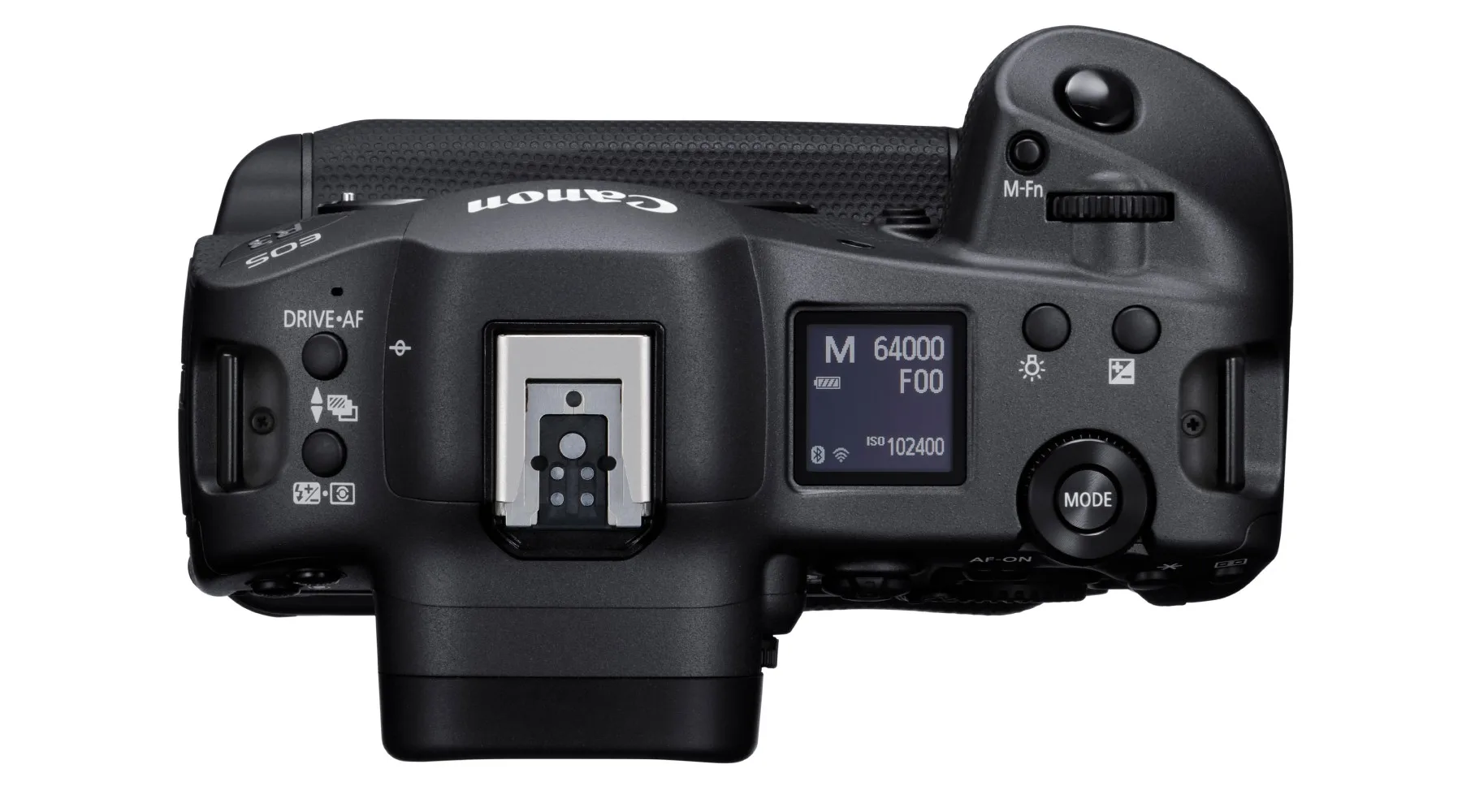
Canon EOS R3 key specifications
The Canon R3 comes with a 21.1MP full frame back illuminated stacked CMOS censor. This stacked approach promotes a faster passage of an image from the sensor, through the DIGIC X image processor, to the memory card. This is great given the higher 30 frames-per-second shoot speed mentioned earlier.
The Canon R3 weighs 1,015g, which is around 400g lighter than the 1D X. While no dimensions were offered, the Canon representative showed me a 1D X and an R3 side-by-side and the latter has a noticeably smaller footprint.
Low-light conditions will be a breeze for the R3, with an ISO range up to 102,400 for still images, expandable to 204,800. It's compatible with the RF lens suite, which now stands at 25 thanks to the announcement of the new RF 16mm F/2.8 STM (AU$549) and RF 110-400 F/5-6-8 IS USM (AU$1,379) units. Both of these are out late October. EF lenses can also be mounted via an adaptor. To further ease the passage of 1D X users across to the R3, it uses the same LP-E19 battery. Although being a mirrorless camera, the battery life is substantially less.
The EOS R3 operates a dual memory card system, with a single CFexpress type B slot joined by an additional SD UHS II slot. Depending on the lens you are using, you can get up to 8 stops of image stabilisation. If your lens doesn't bring any IS to the table, the R3 has 5-axis in-body stabilisation.
Shooting video quality
During the press briefing, Canon was very focused on what the R3 can deliver with its stills, but it's no slouch on the video front, that's for sure. I suspect Canon downplayed it given it remains a major selling point of the R5.
The reality is the Canon R3 can deliver 4K video up to 120p, which means you can get that great slow-motion content. You can also shoot 6K at 60p RAW if you have a CFexpress card installed. Elsewhere, the video limit cap of 29min 59sec has been removed, as long as your camera is under 23ºC when filming begins. According to Canon, if you have a large empty card and a full battery, you could film continuously for up to 6 hours.
Perhaps the more important fact is that all the subject and eye tracking features seen in the still also carry across to the video content.
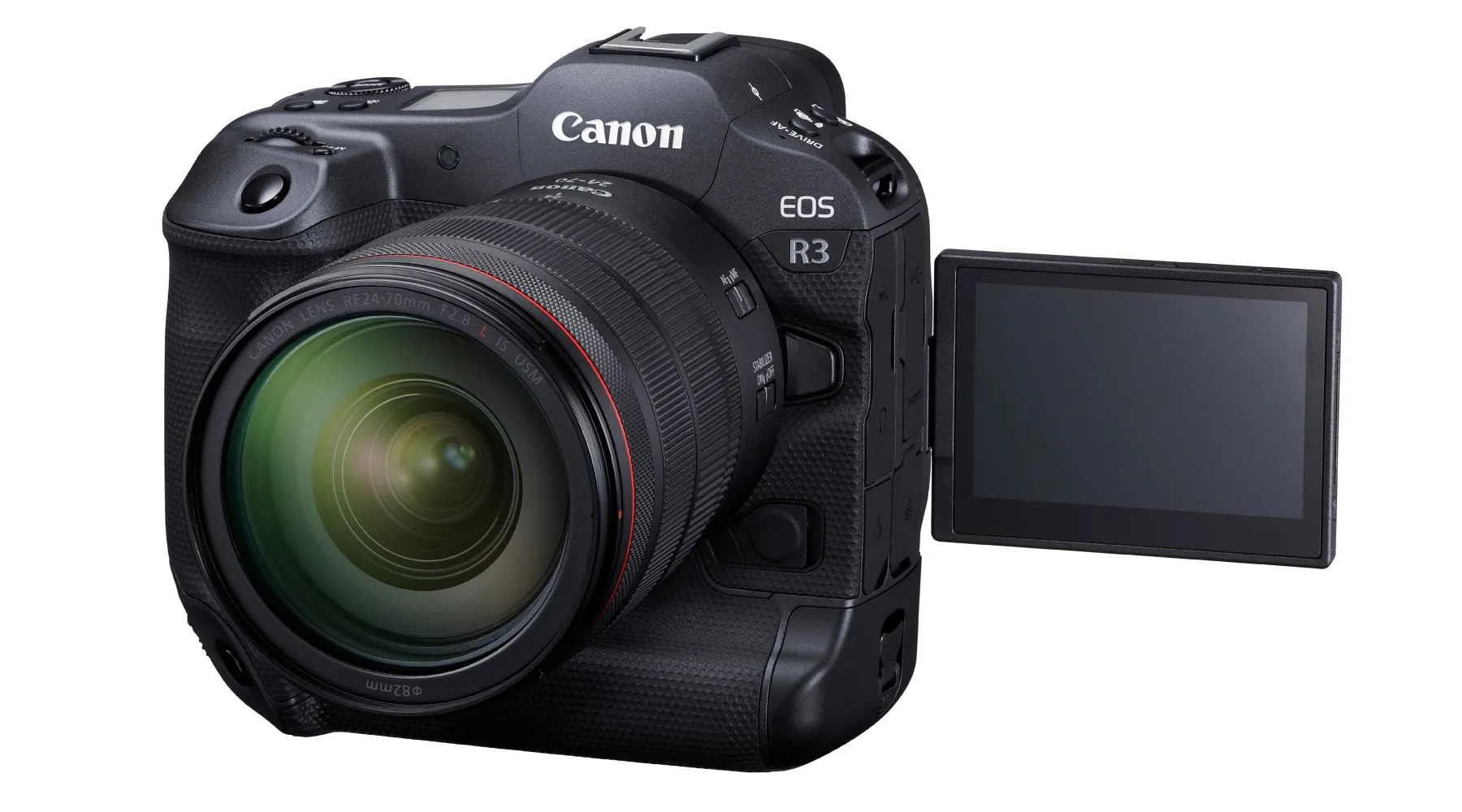
Design
There's nothing revolutionary about the design of the Canon R3, but there doesn't need to be. The EOS range is feature-rich in its button layout and always delivers a comfortable, well-balanced chassis. However, the R3 borrows the rugged and sealed magnesium-alloy body of the 1D X. This gives it extra durability when out in the wild.
Remember when I revealed "reliability" as 1 of the 3 pillars up top? That's why!
All the great input options of the Canon mirrorless range appear to be included. Notably, this includes the auto-focus joystick multi controller, the optical smart controller and the multi-function input on the front. In all there are 3 customisable dials, not to mention the vari-angle LCD touchscreen.
How to pre-order the Canon R3
As mentioned, the Canon R3 is likely to be hard to come by during its November launch window. This is due to the pressure COVID is putting on stock creation. So, if you're interested, get in quick. At the time of writing, pre-order information isn't available, but we'll update this page as soon as it is.
First look Canon R3 review
We'll obviously need to spend a lot more time with the Canon R3 before we provide a final verdict, but on paper, it's hard not to be impressed. The low-light, speed and eye-tracking features could be the perfect combination for a lot of professionals and enthusiasts. And I think it will perform a lot better as a video camera than Canon are intimating.
Of course, a camera is only as good as its lenses. There are now 25 available in the RF range, with a healthier second-hand market starting to form. As soon as we can get some quality time with the camera, we'll update this article with a full Canon R3 review and a final verdict.
The baton is starting to be passed between DLSR and mirrorless cameras and there are plenty of good options in the market. Make a smart financial decision and read all about Australia's best DSLR and mirrorless cameras.
